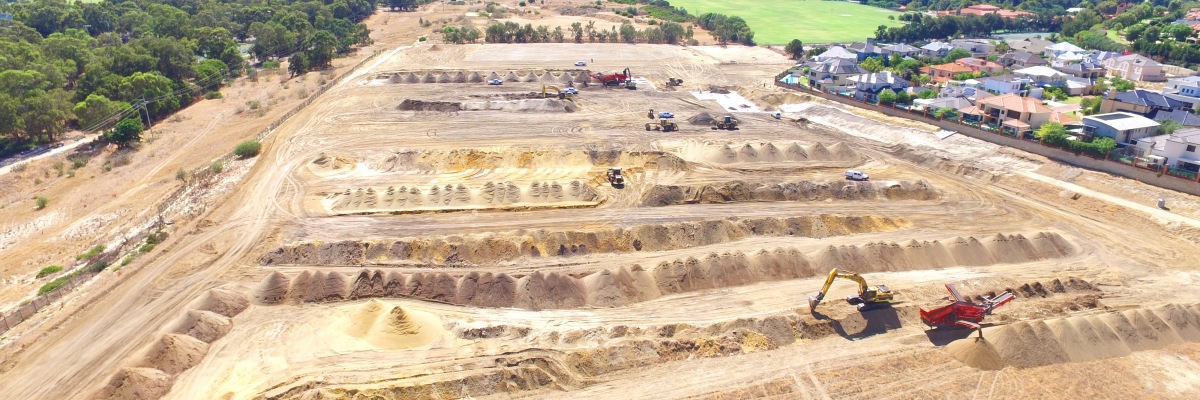CCGS Site Remediation
DM Civil undertook soil remediation works at Lot 816 of Swan Location 10780 on Stephenson Avenue, Mount Claremont in Western Australia, owned by the Christ Church Grammar School (CCGS). The site has been redeveloped as playing fields and sports pitches for CCGS.
-
Client:
Christchurch Playing Fields Pty Ltd
-
Location:
Mt Claremont, WA
-
Construction Period:
Oct 15 - May 16
-
Key Elements:
- Project management
- Civil construction
- Subdivision construction
- Earthworks
- Remediation
- Clearing
- Demolition
- Underground services
- Sewer reticulation
- Stormwater installation
- Water main installation
- Roadworks
- Concrete
- Client Liaison
Project overview
Christ Church Grammar School identified some years ago, the future need for an increased number of sports fields and facilities to sustain the continual growth in pupil numbers. They purchased a parcel of land, formerly a part of the Brockway Road Landfill site, for the purpose of these playing fields. In 2015 the school had reached a point where the additional facilities were required and design work was initiated for construction.
The project included the remediation of the top 600 millimetres of the 86,000 square metre area with screening of this material to minus 15mm. Each screened material stockpile was analysed for contaminants and validated before being replaced over a layer of geofabric. This was then covered with a 100mm clean imported fill capping layer. The screened material was buried on site well below the finished field level in a selected location.
Additional works were added during the contract including the reconstruction and shaping of the Northern and Eastern boundaries. This required a further 4,000 cubic metres of imported fill material, a parking area, an access road and a slip lane on Stephenson Avenue.
By utilising 2 heavy duty power screens, over 50,000 cubic metres of the existing sand capping was processed to ensure that the project was completed on time.
Significant achievements and benefits
The thickness of sand capping across the site was varied due to thedifferential settlement of the underlying landfill and the placement of additional fill over the site since closure of the facility. Trial pits to confirm the thickness of sand capping were excavated across the site. From this, a final design was produced in a suitable location for the screened material.
To accurately and efficiently control the levels and tight tolerances on the 86,000 square metre sports field, we utilised our automated machine control system on the grader and excavators. They were controlled by an on-site calibration station with accuracy checked daily. This system had the advantage of being controlled remotely, often eliminating the need for a surveyor to travel to site. This resulted in a significant saving on field survey time, eliminated the need for more than 1,000 survey pegs and provided an accurate as-constructed survey of the final surface.
Project planning and close supervision were instrumental in ensuring that tight level control was maintained and that the project remained on programme. Fortnightly site meetings were held where site issues and progress were discussed. The project team delivered an excellent final product. This team included the consulting engineers as well as the client, both of whom were open to suggestions for improvement on the original design.
Because of the large surface area, the site was very exposed to the coastal winds. Three DustTrack PM10 airborne particulate monitors were installed along the Southern boundary and fitted with a telemetry system to provide regular sampling data updates to the Project Manager’s mobile telephone. RPS Environmental also had three fibre monitors on site which, along with our dust monitors, did not detect dust or fibre issues above the stipulated action criteria as set out in the Remedial Action Plan.
Watch our time lapse video of the civil construction and soil remediation site activities associated with this project and as well as highlighting processes conducted by DM Civil.
The benefit in the construction of the new playing fields was gained by the saving in not having to remove the rubbish tip material. This can be expressed not only in financial terms, but by environmental excellence in the design and construction methodology which obviated the need to relocate the material to landfill.
